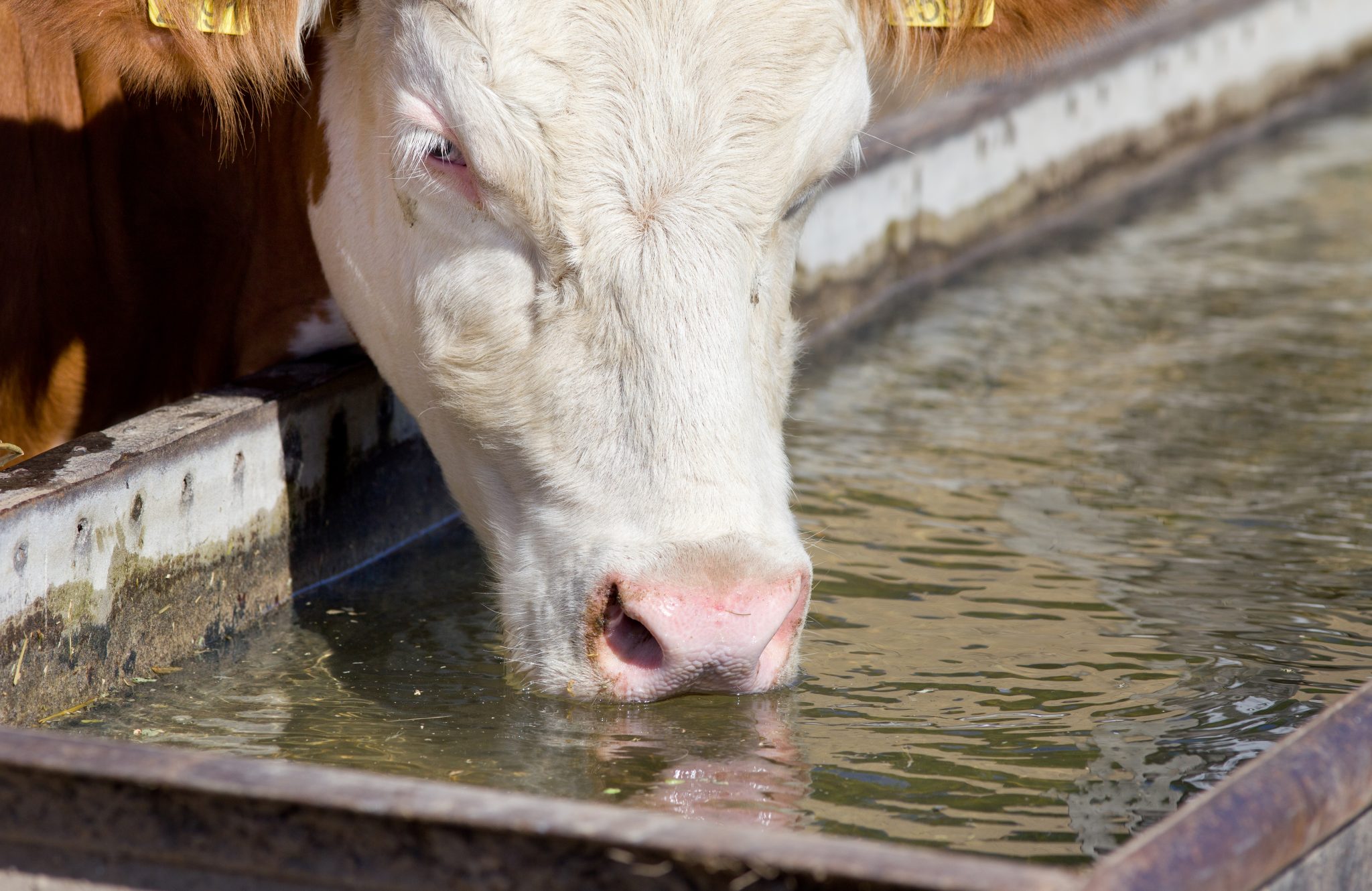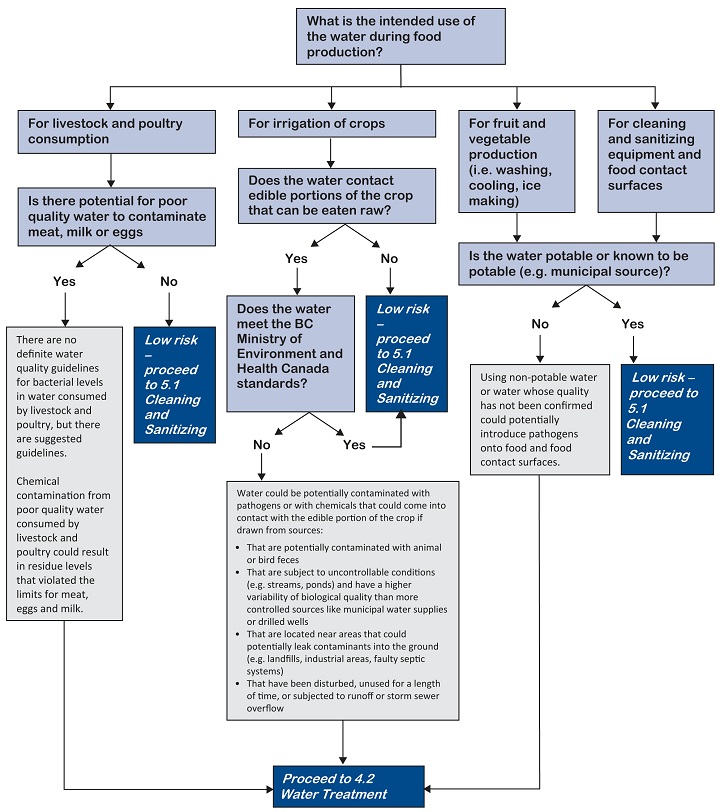Livestock Water Quality Standards
These will be useful when trying to determine the size of water storage required. And kind of salts in the water.
Https Www Noble Org Globalassets Docs Testing Services Livestock Water Guidelines Pdf
Water quality which includes salinity acidity toxic elements and compounds and algal growth.

Livestock water quality standards. 54 L 12 gallons. Water quality Quality of water is broadly defined as its fitness for consumption by livestock to. General effects of saline water for all livestock are shown in Table 1.
To achieve high-quality surface water fence livestock out of the pond or stream and pipe the water to a tank or other waterer. In responding to the challenge of improving water quality countries develop standards intended to protect public health. Animal factors which include breed differences and age and condition of stock.
Livestock tolerance of minerals in water depends on many factors. 54 L 12 gallons for bred dry cows and heifers. The guidance in this handbook supports EPAs WQS regulations at 40 CFR Part 131.
Table 2 shows the effects of different levels of salinity on each type of livestock. Faries Jr John M. Watery droppings in poultry.
Usable for all classes of livestock and poultry. There is a noticeable insufficiency of recent information on many aspects of water quality issues in contemporary livestock selected for superior performance characteristics. Water may clog pipes over time.
It is generally not feasible nor warranted to test livestock drinking water for the. Good quality water in adequate supply is essential to the health and proper growth of animals. As water requirements are affected by a large number of factors these standard tables emphasise that water consumption cannot be predicted.
Increasing production goals is taken into consideration in assessment of water quality standards especially in the face of the increasing complexity of water contaminants. Poor water for poultry. May cause temporary diarrhoea in livestock not accustomed to such water.
To obtain the best water from a pond provide a grassed watershed where no chemicals or manure are applied and float a screened pipe intake about 2 feet below the surface. 675 L 15 gallons for nursing cows. Usable for all classes of livestock and poultry.
Lactating cows possess the greatest amount of body water from 62 to 69. The quality of water whether it is used for drinking irrigation or recreational purposes is significant for health in both developing and developed countries worldwide. Table 28 WATER QUALITY GUIDE FOR LIVESTOCK AND POULTRY USES 1.
Water supplies should be managed so that nutrient inputs are minimal. We recommend that salinity of water for livestock is expressed in TDS units which is the national standard for livestock tolerance of salinity. Physiologic stage and body composition affects the bodys water content.
Hard water also decreases the cleaning action. Water is the most important nutrient for range cattle. Canadian water quality standards for agricultural use including livestock were first published in a document titled Canadian Water Quality Guidelines in 1987 by the Canadian Council of Resource and Environment Ministers CCREM.
Water Salinity EC dSm Rating Remarks. That organization was later renamed the Canadian Council of Ministers of the Environment CCME. Livestock may drink less if the water tastes L-2374 6-98 Water quality.
For assessing water suitability for livestock. Notes to tables Sheep on lush green feed may tolerate salinity up to an EC value of 20300 μScm without loss of condition or production. The Water Quality Standards Handbook is a compilation of EPAs water quality standards WQS program guidance including recommendations for states authorized tribes and territories in reviewing revising and implementing WQS.
Sweeten and John C. It is required for all life processes. Hard water leaves scaly deposits on plumbing and fixtures.
TDS is the sum of all the salt ions dissolved in water including sodium calcium magnesium chloride sulphate and carbonate and has units of milligramslitre mgL. Keep in mind that water requirements increase at higher temperatures. Total body water of cattle is 56 to 81 per cent of body weight.
Environmental factors such as air temperature and feed quality. A loss of 20 per cent of the bodys water will be fatal. A 4322 Pathogens and parasites Drinking water for livestock should contain less than 100 thermotolerant coliforms per 100 mL median value.
In livestock or watery droppings in poultry may be noticed in animals not accustomed to this level of salinity. Kind age diet and physiological condition of the animal. Publishes nutritional standards for livestock which contain tables for the estimated daily free water intakes of livestock by age and physiological state.
Some of the most common water contaminants affecting livestock production include. Livestock not used to saline water may refuse it or have temporary diarrhea. Gives water a salty taste.
Its relationship to livestock Floron C. The amount of water consumed by animals varies with the species growth stages of the animals and during preg-nancy and while nursing. Fat cows contain less water than thin lactating cows and younger animals have higher water.

Comparison Of Water Quality Standards Domestic Drinking Water Download Table
Https Www Mla Com Au Globalassets Mla Corporate Research And Development Program Areas Feeding Finishing And Nutrition Feedlot Design Manual 05 Water Quality 2016 04 01 Pdf

Livestock Drinking Water Quality Alabama Cooperative Extension System

Livestock Water Requirements And Water Budgeting For South West Western Australia Agriculture And Food

Pdf The Effect Of Water Quality On Cattle Performance On Pasture

Drinking Water Quality Standards As Recommended By Bis And Who Download Table

Water Quality Standards Download Table

Water 4 1 Water Quality Province Of British Columbia

Providing Clean Water Improves Dairy Cattle Nutrition And Production Zinpro
Post a Comment for "Livestock Water Quality Standards"